Jury & Awards
Jury Process
A 2-phase jury process will take place Spring/Summer 2013. A jury (in formation) will include professionals in architecture, fashion design, arts, and labor history.
Phase 1
The Jury will produce a short-list selection of 10 entries. This short list of Entrants will be invited to participate in Phase 2. The recipients of this invitation will need to further develop their design and address comments and/or concerns from the following: Jury, New York University (NYU), Landmarks Preservation Commission (LPC), and the Remember the Triangle Fire Coalition Memorial Committee. (LPC staff will provide a preliminary review for submissions that advance to Phase 2.)
Phase 2
Short-listed Entrants will be required to provide a general description of the proposed installation, maintenance and removal regimen (the Memorial must be temporarily removable, as referenced under Challenges) to accommodate façade and general maintenance activities. Phase 2 requirements may also be addressed in Phase 1 as part of Entrant’s submission — but are not initially required. These Entrants will receive comments from the parties referenced above (Phase 1); these must be addressed. Upon receipt of this supplemental project information, RTFC will provide a stipend of $500. The Jury will reconvene to make a final selection of the top 3 prizewinners and honorable mentions.The 1st place prizewinner will be invited to participate in the execution of the memorial. The construction of the memorial will be based on funding, permitting and the complexity of the winning selection. As the building is privately owned by New York University (NYU), designated a historical landmark building by Landmarks Preservation Commission (LPC) and listed on the National Register of Historic Places, both NYU and LPC will require a final review (LPC also requires full submittal process) prior to construction. Winning selection will be looked at in terms of the relationship of the proposed memorial to the architectural elements and other significant features (including the social history related to the fire) of the building.
The Jury will be solely responsible for the selection of the finalist(s). Submissions will be assessed for their creativity and design criteria. The decisions of the Jury are final and will not be subject to review. No appeals from Entrant(s) concerning the decision of the jury will be permitted and no correspondence will be entered into.
Winners and Prizes
3 prizewinners will be selected from the participants of Phase 2.
1st Place Winner
$5,0002nd Place Winner
$3,0003rd Place Winner
$1,500Honorable Mentions selection will be awarded at the jury’s discretion.
A publication of the jury selection and others, along with a gallery and online exhibition will be available for public viewing.
Jury
In formation — additional members to be announced
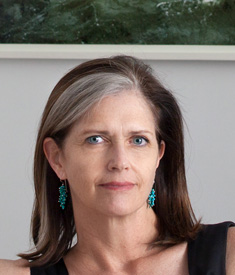
Deborah Berke, FAIA, LEED AP (Competition Jury Chair) creates buildings that have presence and character - that rely on a discourse between a subtle hand and bold composition to become arresting architecture. In an evolution of her "philosophy of the everyday," which earned her international renown, her work over the past decade is decidedly of a larger scale, distinguished by hospitality, commercial, residential, and arts-related buildings.
As the inaugural recipient of the Berkeley-Rupp Architecture Prize and Professorship, Deborah is the Berkeley-Rupp Visiting Professor of Architecture at the University of California, Berkeley’s College of Environmental Design. She is also Professor (Adjunct) of Architectural Design at Yale University, a post she has held since 1987. Deborah previously taught at the University of Maryland, the Rhode Island School of Design, the University of Miami, and the Institute for Architecture and Urban Studies, of which she was a fellow.
Integral to her professional life, Deborah is deeply committed to public service. She continues in her role as a Founding Trustee of the Design Trust for Public Space in New York City. She is also a Trustee of the Forum for Urban Design and a Trustee, serving as Vice President, of desigNYC. Over the past two decades, Deborah has served as Chair of the Board of Advisors, Buell Center for the Study of American Architecture at Columbia University, Trustee of the Brearley School, Vice President of the AIA New York Chapter, and a Trustee of the National Building Museum. In addition, she serves as a juror in numerous architecture and design award programs and lectures throughout the US and Canada.
Deborah is a graduate of the Rhode Island School of Design, The City University of New York and in 2005 was awarded an Honorary Doctorate of Fine Arts from the Rhode Island School of Design, her alma mater.
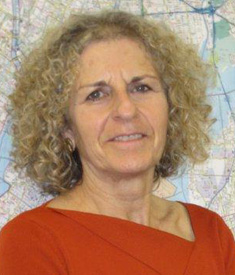
Wendy Feuer is the Assistant Commissioner for Urban Design & Art at the New York City Department of Transportation. The position was created to help realize the goal of creating world class streets and public spaces. The office launched the Urban Art Program in the fall of 2008 and has installed over 100 temporary projects including an artist-designed painting of 44,000 square feet of the plazas in Times Square. The Office both develops and reviews designs for streetscapes. She worked on the award-winning DOT Street Design Manual and the multiple agency Active Design Guidelines. She is currently working on DOT’s citywide wayfinding project. Feuer was the founding director of the New York Metropolitan Transportation Authority’s Arts for Transit office and served as Director of Art and Design for almost eleven years (1985–1996). As the director, she was responsible for developing permanent and temporary visual and performing art programs for the MTA’s the subway and commuter rail systems that include almost 600 stations and serve almost 5 million commuters daily. As a consultant, Feuer (1996–2007) Feuer worked on public art and planning projects for institutions including, Columbia University, the Hudson River Park Trust, Raleigh-Durham Airport Authority, Brown University and The Cathedral St. John the Divine. Feuer has participated on many juries, lectured widely, and written articles on public art in the public’s spaces.
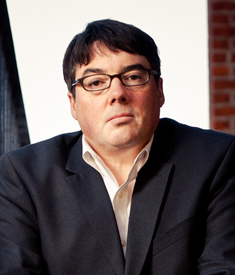
Richard Greenwald, PhD, a professor of history and sociology, is Dean at St. Joseph's College in New York. He was until recently, professor of history, Dean of the Caspersen School of Graduate Studies, Director of University Partnerships, and was the Founding Director of the Business, Society & Culture Program at Drew University in Madison, New Jersey. Trained as a social historian of modern America, Richard's scholarly interests are political economy, particularly the intersection of the workplace, business and American politics. His most recent book is Labor Rising: The Past and Future of American Workers (2012), co-edited with Daniel Katz. He is the author of The Triangle Fire, the Protocols of Peace and Industrial Democracy in Progressive Era New York (2005), co-editor of Sweatshop USA: The American Sweatshop in Historical and Global Perspective (2003), and editor of Exploring America's Past: essays in Social and Cultural History (1996). His current projects include: The Death of 9-5: Permanent Freelancers, Empty Offices and the New Way America Works (Bloomsbury, 2013); and a co-authored history of the needle unions with Daniel Katz, entitled Woven Together for Justice (supported by a grant for the Hillman Foundation), under contract with The New Press. He has served as Associate Editor for the scholarly journals Enterprise and Society: the International Journal of Business History and Labor History and is a member of the editorial boards for the journals Working USA & Labor History and In These Times. Richard was until recently the senior editor of the book series “Work in the Americas,” published by University Press of Florida. He blogs on workplace issues for In These Times and his essays and articles have appeared in In These Times, The Progressive, Bookforum, Businessweek, The Brooklyn Rail (where is is a contributing writer), The Rumpus, The Chronicle of Higher Education, Inside Higher Education, and The Wall Street Journal among other places.
Richard was born in NYC, graduated with a BA from Queens College, City University of New York and received his Ph.D. in History from New York University. He lives with his wife and their two children in Queens.

Shani Grosz is a graduate of Parsons School of Design. Shani has established herself as an important and internationally recognized designer with over a decade as the President and Designer of SHANI Collection. She has won many prestigious design awards for her well executed vision of "Wearable Art". Over the years, she has dressed many celebrities and developed numerous wardrobes for both film and TV and has been featured in fashion magazines worldwide. Most recently her latest line "Nue by shani" is getting a standing ovation from woman across the globe . This collection features dresses with built in shapewear using the latest technology to make a woman look a size smaller. Her prolific design talents and easy sensibilities have allowed her to create a niche for herself within the fashion world. She is also a contributing force within the Designer Critic Program at FIT, And works closely at developing up and coming talent. Shani designs for the modern woman, celebrating her multi-faceted lifestyle that allows her to be both feminine and strong.
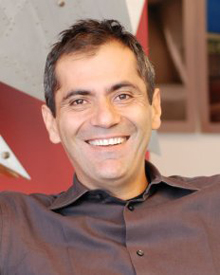
Yama Karim is a Principal for Studio Daniel Libeskind. He received his MArch from Columbia University in 1995 and a BA in Environmental Design from the University of California, Berkeley in 1991. He worked as a senior designer for Reiser-Umemoto-Reiser (RUR) Architecture PC from 1995 to 1999, and also worked for Studio Daniel Libeskind - Berlin between 1995 and 1998. From 1999 to 2003, Mr. Karim worked as Senior Designer at Polshek Partnership Architects in New York. Mr. Karim taught at the ETH (Swiss Federal Institute of Technology), in Zurich, Switzerland from 1996-97 and was a Visiting Professor at the Pratt Institute form 1997-2003. He has worked for Studio Daniel Libeskind New York since May 2003, when the Studio moved its headquarters to New York City. Some of Mr. Karim’s contributions to the work of the Studio include the redevelopment of the World Trade Center Site; the Fiera Milano redevelopment project; Keppel Bay, a residential development in Singapore; and Zlota 44, a tower in Warsaw, Poland. Mr. Karim is also a Principal and the main liaison for SDL’s partner office in Milan.
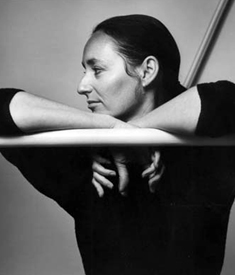
Sheila Levrant de Bretteville is the Caroline M. Street Professor of Art at Yale University. Over more than four decades her social design practice has developed to reflect and sustain local populations on both coasts of the US, Russia and Hong Kong. Sheila's 1970 shrink-wrap poster expressing her long-standing commitment that “taste and style just aren’t enough,” recently on exhibit at MOCA in LA and MoMA PS1 in Kellie Jones' Now Dig This! Art and Black Los Angeles.
For Sheila practice and pedagogy dovetail where paying attention to individual differences, ambiguities and contradictions are as valued as similarities and commonalities. Her visual methods continued to develop through her creation of the first Women’s Design Program at Cal Arts, founding the LA Woman’s Building and Women’s Graphic Center, and from the local people at each place here and abroad her site-specific work has been permanently installed. Among the places Sheila's work has been acknowledged, collected and/or exhibited are at Americans for the Arts, LAMOCA, Walker Art Center, Victoria and Albert Museum, Centre Pompidou, the AIGA’s gold medal, Barnard College’s Distinguished Alumna award, and honorary doctorates from MICA, CCAC, Otis College of Art and Design, Moore College of Art and Design. Now in 2013, Sheila continues to develop ways to enhance sites where differences and commonalities can co-exist, combining permanent materials with infinitely changing possibilities in the hope of creating models of an egalitarian, democratic and shared commons.
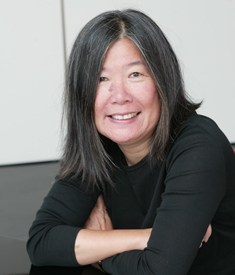
Yeohlee Teng is an award-winning designer born in Malaysia and has worked primarily in New York City, where she established her house, YEOHLEE Inc, in 1981.
Yeohlee believes that design comes from serving a function and is refined through time and process. Her designs are driven by material, maximizing the use of each fabric by thoughtful consideration of weight, texture, color, cut and finishing. She believes that "Clothes have magic. Their geometry forms shapes that can lend a wearer power."
Yeohlee’s work has been featured in numerous exhibitions internationally and is part of the permanent collection at the Metropolitan Museum of Art, where curator Richard Martin called her “one of the most ingenious makers of clothing today. Yeohlee's clothes conserve and impart energy for they are the synthesis of reason and magic."
YEOHLEE's Collection is — and has always been — designed, developed and produced in New York City. Made in New York has the advantage of a quick "just in time" response that is critical in today's economy. This accessibility promotes efficiency, conserves time, energy and resources, and ties in with Yeohlee's Zero Waste philosophy.
YEOHLEE : WORK published in 2003 surveys the first 20 years of her practice with essays by prominent fashion, art and design curators and critics. Yeohlee is the recipient of the Smithsonian Cooper-Hewitt National Design Award for Fashion 2004.